|
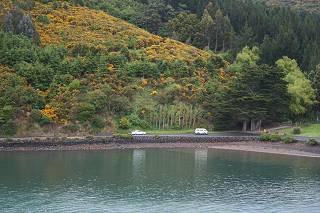
|
Dunedin lies in the southeast of the South Island of
New Zealand. The city is near a fine harbor with a
narrow entrance. Along both sides of the harbor are
hills with lush greenery. Archaeology shows that the
place has been regularly occupied by humans since at
least 1100 AD. Dunedin takes its name from the
Gaelic name for Edinburgh. This is fitting because
the town was established by Scots. |
|
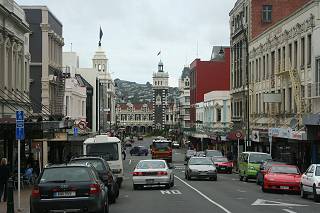
|
Today's Dunedin is a city of some 120,000 people.
Its plan was laid out in 1848 by Charles Kettle, the
surveyor. The center of the city is called the
Octagon, a plaza area with eight sides. Feeding into
the Octagon are broad avenues with shops, pubs, and
cafes. This view looks from the Octagon southward
toward the Rail Station. |
|
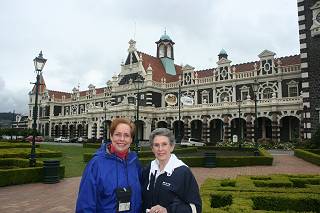
|
Diane and Laura are standing at the entrance to the
Rail Station which was built in 1901. It is a
handsome building with carefully manicured shrubs in
a broad plaza in front. Today the Rail Station
serves as a shopping mall in addition to serving
passengers. |
|
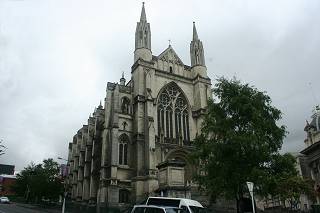
|
On
the Octagon's north side sits the Cathedral Church
of St. Paul, the home parish of the Diocese of
Dunedin. It crowns a hill and has a wonderful view
of the city below. Dunedin is known today for
engineering, bio-technology, and software, in
addition to its deep-water port (at Port Chalmers). |
|
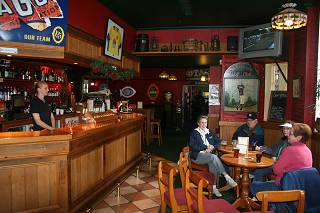
|
We
took time out at a small pub off the main
thoroughfare in the city. The day of our visit was
cold and threatened rain all day. The warmth of the
pub provided a great break and a great lunch. |
|
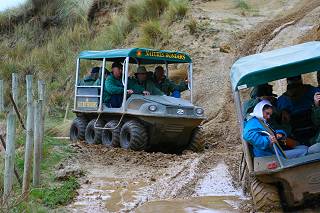
|
The Otago Peninsula, as the area is called, provides
dramatic scenery and is home to a colony of
albatross, to seals, and to yellow-eyed penguins. We
were able to visit a reserve for these animals in a
secluded area reached only by the special vehicles
at left. Called "Argos" these vehicles can climb any
hill and ford any stream with their eight wheel
drive. See our visit and some of the Wildlife of New
Zealand! |